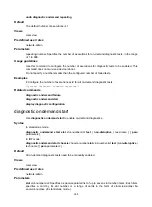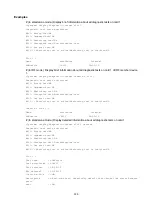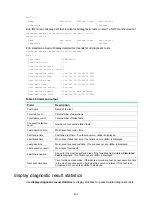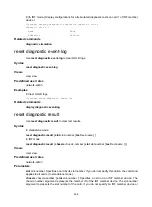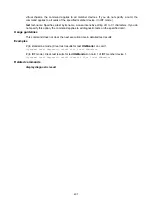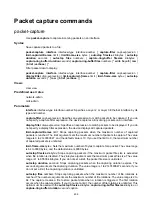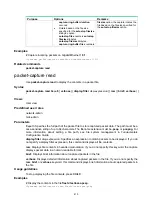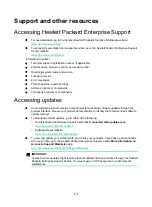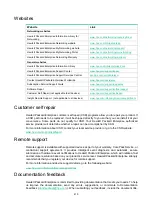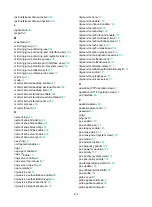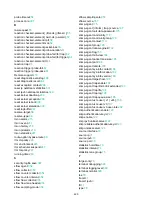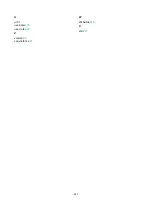
409
capture-ring-buffer
filesize
kilobytes
: Rotates the packet file when the maximum file size is
reached. The
kilobytes
argument sets the maximum file size. The value range is 1 to 65536
kilobytes.
capture-ring-buffer
duration
seconds
: Rotates the packet file when the rotation interval expires.
The
seconds
argument sets the rotation interval. The value range is 1 to 2147483647 seconds.
capture-ring-buffer
files
numbers
: Sets the maximum number of packet files for file rotation, in the
range of 2 to 64. If a file rotation occurs after this limit is reached, the capture deletes the oldest file
and creates a new file to store packet data. If you do not set a limit, the number of packet files is
unlimited. This option must be used with the
autostop
filesize
kilobytes
,
capture-ring-buffer
filesize
kilobytes
, or
capture-ring-buffer
duration
seconds
option.
write
filepath
: Specifies the full path of the packet file to store captured packet data. The path must
be a case-sensitive string of up to 64 characters. The filename extension must be
.pcap
. You do not
need to create the file. If file rotation is disabled, the capture creates a packet file with the specified
file name. If file rotation is enabled, the capture automatically creates a packet file for each rotation,
and renames the file to include a sequence number and timestamp. The sequence number
increases by 1 for each file rotation. For example, set the file name to
a.pcap
. For the first rotation,
the capture will create a packet file named
a_00001_20140211034151.pcap
. For the second
rotation, the capture will create a packet file named
a_00002_20140211034207.pcap
. For more
information about setting a file path, see file system management in
Fundamentals Configuration
Guide
.
raw
: Displays packet contents in hexadecimal notation. If you do not specify this keyword, the
capture displays packet data in a human-readable format.
verbose
: Displays detailed information about captured packets.
brief
: Displays brief information about captured packets.
Usage guidelines
The device displays captured packet data in real time.
•
If you specify the
write
filepath
parameters without specifying the
raw
,
brief
, or
verbose
keyword, this command displays the number of captured packets.
•
If you do not specify any one of the
raw
,
brief
,
verbose
, and
write
filepath
parameters, this
command displays brief information about captured packets.
To stop the capture while it is capturing packets, press
Ctrl+C
.
Use
when you configure the options for stopping the capture or rotating the file.
Table 91 Using the packet filter parameters
Purpose Options
Remarks
Stop capturing
•
Stop based on the capturing
duration:
autostop
duration
seconds
•
Stop based on the number of
captured packets:
limit-captured-frames
limit
•
Stop based on the number of file
rotations:
autostop
files
numbers
•
Stop based on the file size if file
rotation is disabled:
autostop filesize
kilobytes
The packet capture stops if any one of
the limits for the stop options is
reached. The packet capture also
stops if the file system's limit on the
number of files has been reached.
The
autostop filesize
option does not
stop the capture if file rotation is
enabled by the
autostop
files
,
capture-ring-buffer files
, or
capture-ring-buffer
filesize
option.
Rotate files
•
Rotate based on the file size:
capture-ring-buffer
filesize
kilobytes
•
Rotate based on the rotation
interval:
The capture rotates the packet file
when any one of the limits for the
rotation options is reached.
If you specify the
autostop filesize
option after the
capture-ring-buffer

